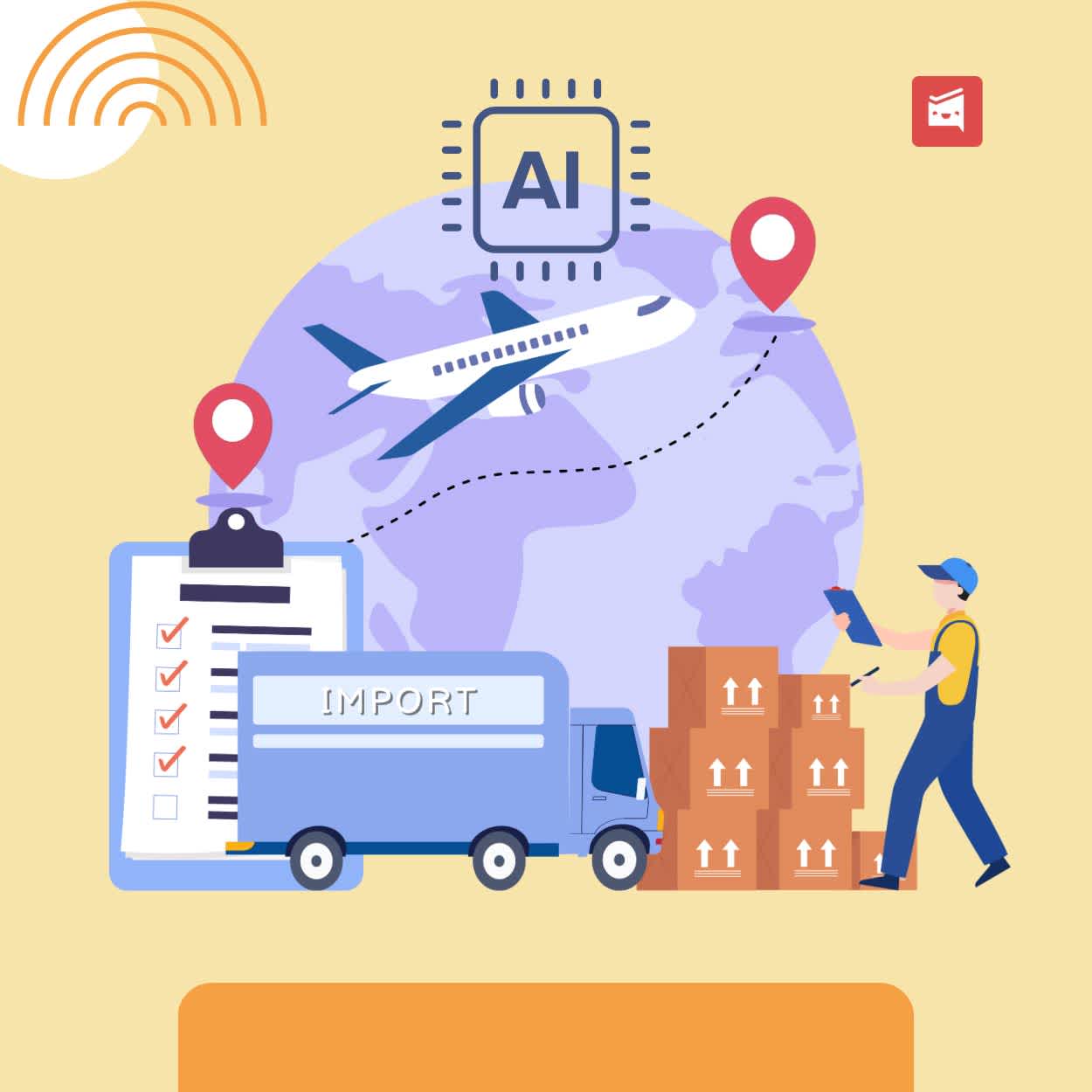How AI is Transforming Task Management in the Transportation Industry
ByJulian Gette
Workast publisher

Workast publisher
In recent years, the transportation industry has seen a remarkable transformation, driven by advances in technology, particularly in artificial intelligence (AI) and computer vision. As the need for safer, more efficient transportation systems grows, integrating computer vision into transportation infrastructure has become a critical step forward. By enabling machines to interpret and respond to visual information, computer vision is poised to improve road safety, streamline operations, and enhance the overall efficiency of transportation systems. In this article, we explore how computer vision software development services can help shape the future of transportation.
Computer vision is a branch of AI that enables machines to interpret and understand the visual world. Through the use of cameras, sensors, and advanced algorithms, computer vision systems can process and analyze visual data to make informed decisions. These systems are capable of detecting objects, tracking movement, recognizing patterns, and even understanding the context of a scene. In the context of transportation, computer vision can be applied to a variety of tasks, including vehicle recognition, traffic monitoring, and autonomous driving.
Enhancing road safety is a critical concern within transportation, and computer vision technology, particularly when integrated with AI in transportation, offers a powerful solution to address a wide range of challenges in this area. By leveraging AI-powered computer vision systems, transportation companies can automate collision detection to identify potential hazards on the road in real-time. These systems are capable of recognizing pedestrians, cyclists, and other vehicles, alerting drivers to imminent dangers, or even triggering automatic emergency braking to prevent accidents. This ability to detect risks early plays a significant role in reducing the likelihood of collisions, ultimately making roads safer for everyone. Furthermore, monitoring driver behavior is crucial, particularly for commercial vehicles. AI-enhanced computer vision systems can analyze drivers' actions, detecting signs of fatigue, distracted driving, or non-compliance with traffic laws. By providing real-time feedback based on this analysis, these systems help prevent unsafe behaviors before they lead to accidents. Additionally, computer vision can enhance traffic signal monitoring by identifying malfunctioning traffic lights or instances of vehicles running red lights, helping to prevent accidents caused by these issues and ensuring safer driving environments.
In addition to improving safety, computer vision plays a pivotal role in optimizing traffic flow and reducing congestion, key aspects of AI in transportation. Real-time video feeds from traffic cameras and sensors can be analyzed by AI-powered computer vision systems to monitor traffic conditions, identify congested areas, and provide traffic management systems with valuable data. This enables dynamic control of traffic signals, reducing congestion and improving the overall flow of traffic. Moreover, computer vision can quickly detect accidents or road blockages, allowing authorities to respond more promptly and efficiently reroute vehicles to avoid delays. Another key area where computer vision can help is in parking management. By integrating computer vision into parking infrastructure, parking spaces can be monitored in real-time, allowing drivers to find available spaces quickly. This reduces the time spent searching for parking and alleviates congestion in urban areas by optimizing parking space usage.
One of the most exciting advancements in transportation, fueled by AI in transportation, is the development of autonomous vehicles. These vehicles rely heavily on computer vision for navigation, obstacle detection, and real-time decision-making. Powered by advanced algorithms and machine learning techniques, autonomous vehicles use computer vision systems to recognize road signs, traffic signals, and lane markings, ensuring compliance with traffic laws and safe navigation through intersections. In addition to traffic signs and signals, computer vision enables autonomous vehicles to detect and avoid obstacles such as pedestrians, cyclists, and other vehicles, facilitating safe navigation even in complex, dynamic environments. Furthermore, computer vision supports advanced driver assistance systems (ADAS), which are critical for enhancing vehicle safety and performance. Technologies such as lane-keeping assist, adaptive cruise control, and collision warning rely on computer vision to collect real-time data and make critical decisions, further advancing the development and safety of autonomous vehicles.
Computer vision software development services are essential for helping transportation companies and government entities harness the power of artificial intelligence to enhance safety and efficiency in transportation systems. These specialized services are designed to address the unique challenges and specific needs of each transportation network, ensuring tailored solutions that meet the diverse demands of the sector. For instance, a dedicated development team can create algorithms and applications to design smart traffic management systems, which optimize traffic flow and monitor conditions in real-time. These systems can integrate seamlessly with existing traffic infrastructure, enhancing urban mobility and improving overall traffic management. Similarly, for companies working on autonomous vehicles, computer vision development services are crucial for building sophisticated perception systems. These systems enable autonomous vehicles to process data from cameras and sensors, ensuring that they can operate safely and reliably in a variety of driving conditions.
As transportation systems grow and become more complex, the need for scalable and robust computer vision solutions becomes increasingly important. Professional development services ensure that the software is designed to handle large datasets efficiently and perform well in real-time applications. For transportation systems that require immediate decision-making—such as advanced driver assistance systems or real-time traffic monitoring—the software is optimized for real-time processing, ensuring that video feeds and sensor data are analyzed without delay. Additionally, scalable cloud-based solutions are often implemented, allowing for centralized data processing and analysis. This enables transportation authorities and businesses to aggregate data from various sources, providing valuable insights for improved decision-making at a regional or citywide level.
Furthermore, as transportation systems are constantly evolving, it is vital for computer vision software to adapt and improve over time. By partnering with expert software development teams, businesses can ensure that their computer vision solutions are regularly updated with new features and enhancements. This ongoing process of improvement may include advancements in object detection, enhanced vehicle recognition capabilities, and the integration of emerging sensor technologies. Development teams also employ machine learning techniques to continually optimize AI models, ensuring that computer vision systems remain accurate and effective, even as road conditions, traffic patterns, and vehicle designs change. To ensure the reliability and accuracy of these systems, expert developers conduct rigorous real-world testing, validating the software in dynamic environments to ensure it performs as expected in practical scenarios.
The integration of computer vision into transportation systems has the potential to drastically improve safety, efficiency, and the overall user experience. Whether it’s optimizing traffic flow, enhancing the capabilities of autonomous vehicles, or monitoring driver behavior, computer vision software development services can help build smarter, more responsive transportation systems. By leveraging the power of AI and cutting-edge technologies, businesses and governments can create safer roads, reduce congestion, and make transportation more efficient for everyone.
As computer vision continues to evolve, the possibilities for improving transportation systems are endless. Investing in custom AI-powered solutions today will ensure a safer, more efficient tomorrow for transportation networks across the globe.
